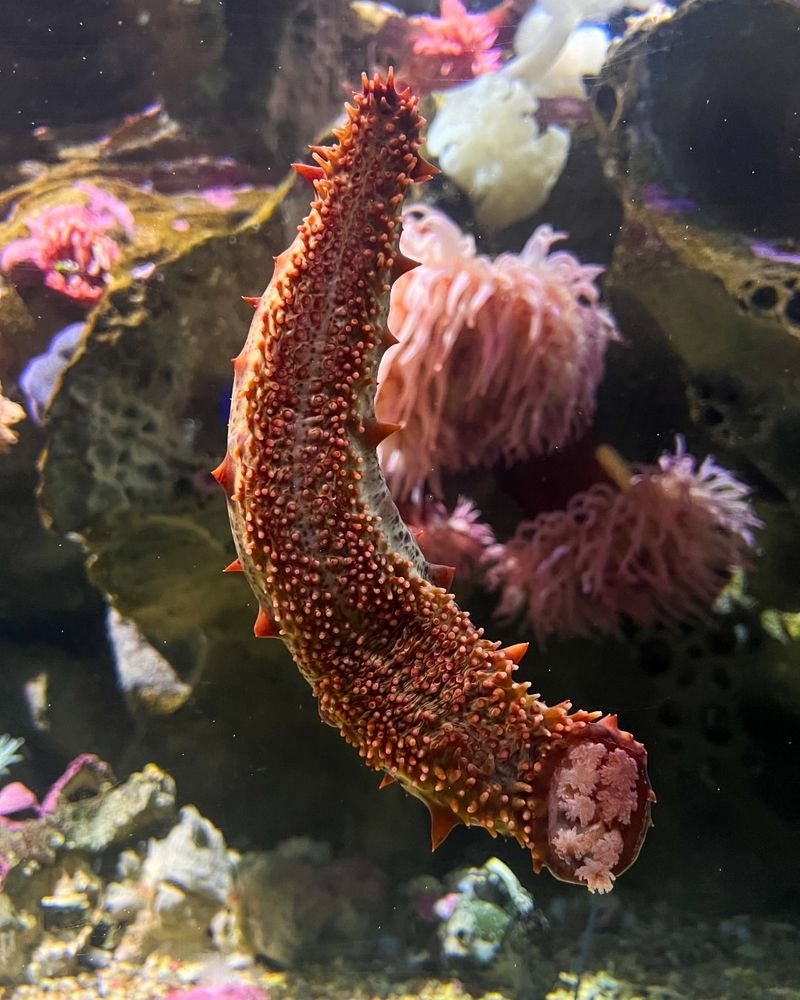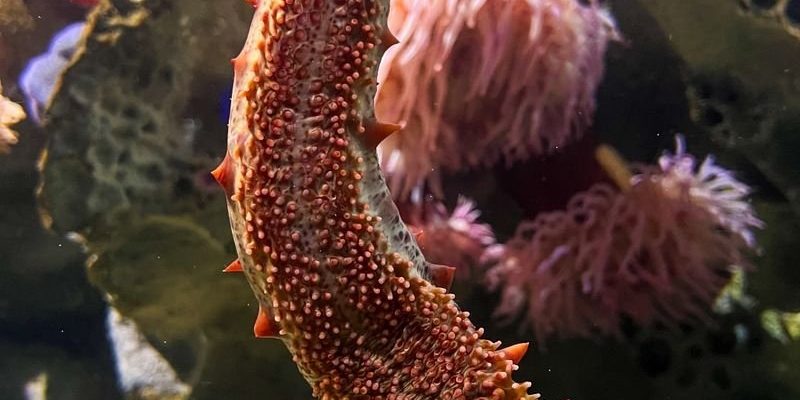
Imagine you’re at a party, navigating through different conversations and environments. You might change your approach based on who you’re talking to. That’s a bit like what sea cucumbers do! They’ve developed unique traits that help them survive, find food, and protect themselves from predators. So, let’s dive into the intriguing world of sea cucumbers and explore how they’ve mastered the art of adaptation.
Understanding the Sea Cucumber
To kick things off, let’s get to know what sea cucumbers are. Scientifically, they belong to the class Holothuroidea and are part of the echinoderm family—just like starfish and sea urchins. They come in various shapes, sizes, and colors, living primarily on the ocean floor. You’ll find them in diverse habitats, from tropical reefs to deep-sea environments.
Sea cucumbers are unique for their elongated, soft bodies, which can measure anywhere from just a few inches to several feet long. They typically have a leathery skin that helps them blend in with the ocean floor, creating a visual barrier against predators. The fascinating part is that when it comes to survival, these creatures truly embody resilience.
Adaptive Traits for Survival
Sea cucumbers have developed several adaptations that help them survive in their underwater environments. Here are some of their standout features:
- Body Structure: Their soft, cylindrical bodies allow them to squeeze into tight spaces, providing shelter from predators. Think of them like a kid fitting into a smaller spot at hide-and-seek!
- Able to Regenerate: If a sea cucumber loses a part of its body—like a limb—it can regenerate it! This is crucial for survival since many creatures in the ocean can bite off their limbs.
- Feeding Mechanism: Sea cucumbers are filter feeders. They eat by ingesting sand or mud and extracting nutrients. They process the particles and expel the cleaned material, essentially recycling the ocean floor.
These adaptations make them particularly well-suited to their environments, helping them to thrive despite the challenges they face underwater.
Defense Mechanisms
When it comes to defense, sea cucumbers have a few tricks up their sleeves. Here’s how they protect themselves:
1. Evisceration
You might find it surprising, but some sea cucumbers have the ability to eject their internal organs when threatened. This process, known as evisceration, can distract predators long enough for the sea cucumber to escape. Although it sounds a bit extreme, the sea cucumber can later regenerate its lost organs. Talk about a flexible defense strategy!
2. Tough Skin
The skin of sea cucumbers is not just for show. It’s tough and can act as a barrier to some predators. Certain species even have spiky surfaces that make them less appealing for a hungry fish to munch on. Just like wearing armor, this adaptation helps them stay safe in a world full of hungry mouths.
3. Chemical Defense
Some sea cucumbers can produce toxic chemicals when threatened. These substances can deter fish and other predators from taking a bite. Picture it like a bad taste in your mouth—you wouldn’t want to eat it again!
Habitat Adaptations
Now, let’s talk about how sea cucumbers adapt to their specific habitats. These creatures are masters of their environment, and here’s how they do it:
1. Burrowing Behavior
Many sea cucumbers are burrowers. They dig into the sand, which helps them avoid predators and harsh environmental conditions, like strong currents. If you think about how a turtle might hide in its shell, sea cucumbers do something similar by burying themselves in the ocean floor.
2. Temperature Tolerance
Sea cucumbers can thrive in a range of temperatures. Whether it’s the warm waters of a tropical reef or the cooler depths of the ocean, they find ways to survive. This adaptability is crucial because their environments can change dramatically due to factors like climate change.
3. Salinity Adaptation
Some sea cucumbers can adjust their bodies to survive in varying salt levels. Whether they’re in a tidal pool or deep ocean water, their bodies can manage different levels of salinity. This adaptability is a bit like how we might drink more water on a hot day; they make changes to stay healthy and hydrated.
Reproductive Strategies
Reproduction is yet another area where sea cucumbers have found unique adaptations to ensure their survival. Here are some highlights:
1. Spawning
Sea cucumbers often reproduce by spawning, releasing their eggs and sperm into the water simultaneously. This mass release allows for greater chances of fertilization, much like throwing a big party and hoping to meet someone special.
2. Asexual Reproduction
Some species can also reproduce asexually through budding. In this process, a new individual can grow from the body of an existing sea cucumber, ensuring that the species continues to thrive. Imagine a plant sprouting new leaves—this is nature’s way of making sure life goes on.
3. Parental Care
While many sea cucumbers leave their eggs to fend for themselves, some species exhibit parental care. They will guard their eggs from predators, a protective instinct that enhances the survival rate of their young. It’s heartwarming to think about how even these simple creatures can show care for their offspring!
The Importance of Sea Cucumbers in the Ecosystem
Beyond their remarkable adaptations, sea cucumbers play a vital role in their ecosystems. Here’s why they matter:
1. Nutrient Recycling
As filter feeders, sea cucumbers help recycle nutrients in the ocean. By processing sediment and breaking down organic matter, they contribute to the health of their environment. Imagine them as the clean-up crew of the ocean floor, helping to keep things in balance.
2. Habitat for Other Creatures
Their burrowing activities create habitats that benefit other marine creatures. Many small animals will find shelter in the spaces they create. It’s similar to how fallen trees in a forest provide homes for various critters.
3. Indicators of Environmental Health
Sea cucumbers are considered bioindicators, meaning their health reflects the overall state of the ecosystem. If sea cucumber populations are thriving, it usually indicates a balanced and healthy underwater environment. This makes them crucial for marine biologists tracking ecosystem changes.
In conclusion, the sea cucumber may not be the most glamorous creature of the ocean, but its adaptations are nothing short of fascinating. From its unique body structure and defensive strategies to its vital role in the ecosystem, the sea cucumber truly showcases nature’s ingenuity.
Next time you think about the wonders lurking beneath the waves, remember the simple yet resilient sea cucumber, navigating its underwater world with grace and adaptability. Whether it’s through its ability to regenerate or its role in nutrient recycling, this incredible echinoderm teaches us a lot about survival and the interconnectedness of life in the ocean. So, let’s appreciate these squishy superheroes and their remarkable ways of thriving in the depths of our seas!

